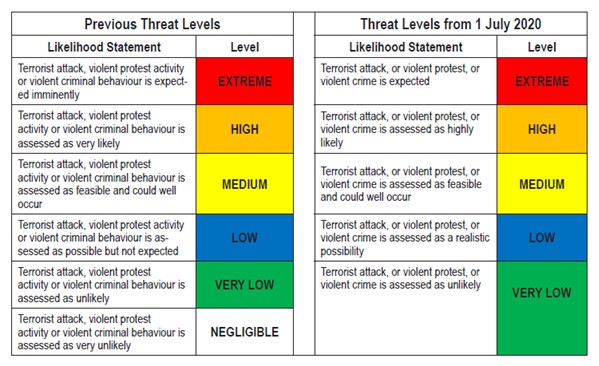Author/s: Combined Threat Assessment Group (CTAG)
Published in National Security Journal, 27 November 2020
Figure 3: How the probabilistic, qualitative terms relate to each other
When used in risk assessment frameworks, the likelihood assessment is often represented by a threat level. For the National Security System risk assessment framework, CTAG conveys its assessment of the likelihood of a terrorist attack occurring on a scale from VERY LOW to EXTREME (see Figure 4 below). This follows a change in methodology from a six to a five-tiered threat level framework with effect from 1 July 2020. Although the level descriptors were updated to better reflect probabilistic language, the descriptor for MEDIUM has remained as “feasible and could well occur”, placing it in the mid-range for probabilistic language spectrum. Importantly, the parameters of the levels themselves have not changed (with the exception of VERY LOW, which expanded to include former NEGLIGIBLE assessments). Accordingly, aside from the now defunct ‘negligible’ level, all threat levels set before 1 July 2020 did not require adjustment, including the National Terrorism Threat Level.
Figure 4: Past and current CTAG threat levels
